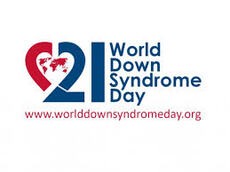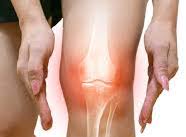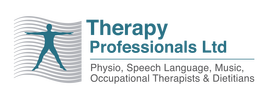 Ageing and Down Syndrome International Down Syndrome Day 21 March Adults with Down syndrome are living longer than ever before, now commonly reaching their 50’s 60’s and 70’s. For this reason it makes sense to learn all we can about the unexpected challenges that may accompany growing older. Many documents refer to adults with Down syndrome as ‘experiencing accelerated ageing'. What this means is, conditions usually seen in elderly adults (over 65) within the general population are being experienced by individuals with Down syndrome in their late 40's or 50's. The reason for this is not fully understood, but is believed to be largely related to the genes on chromosome 21 responsible for Down syndrome which are also associated with the ageing process. As we do not yet fully understand the ‘ageing’ process in adults with Down syndrome, predicting and preparing for this is challenging. Being aware of possible changes, and monitoring for early signs of these, will help with a proactive response. Below are a few common signs of ageing in adults with Down syndrome: Eyesight changes:
Diagnosis: Regular check ups with an Opthalmologist can help with early diagnosis. Hearing changes:
Diagnosis: Routine ear examinations for wax and periodic screening with an audiologist is recommended. Undiagnosed vision and hearing problems are common and are frequently mistaken as stubbornness, confusion or disorientation. These can be greatly improved with glasses, hearing aids, removal of ear wax and environmental adaptions. Hypothyroidism: Common in adults with Down syndrome but frequently undetected. The thyroid gland is involved in various metabolic processes controlling how quickly the body uses energy, makes proteins and regulates hormones. Signs and symptoms can include:
Diagnosis and treatment: It can be easily detected by a blood test and controlled with medication. Obstructive Sleep Apnoea: Leading to poor quality sleep which is not restorative. It can also put a strain on the heart and lungs and cause high blood pressure. Early signs include:
Later signs:
Diagnosis: Via a sleep study  Osteoarthritis: Many individuals with Down syndrome have hyper flexible joints. Over time these can lead to increased wear and tear on the large joints (hips, knees etc.) causing osteoarthritis. Those who are or have been overweight are at a greater risk. Arthritis is painful and it can lead to:
Treatment: Pain levels are often under reported so needs to be discussed with a GP or specialist if suspected. Suitable pain relief is essential. Osteoporosis: A thinning of bone mass leading to the risk of fracture. Adults with Down syndrome are at a higher risk for disease especially if there is:
Diagnosis: A bone density scan and can be treated with medication, exercise and diet. Atlantoaxial or Cervical spine (neck) instability: Instability between the first and second spinal bones directly below the base of the head, If instability is present and arthritis changes occur in the spine, there is increasing risk of damage to the spinal cord in that region. The bones of the neck are more vulnerable as adults with Down syndrome grow older. Symptoms include:
Diagnosis: A screening cervical spine x-ray is generally recommended at least once during adulthood. Coeliac disease: Where one’s body cannot digest gluten present in wheat products, causing damage to the lining of the intestine and preventing absorption of certain nutrients causing:
Diagnosis: Screening can be done via a blood test, but formal diagnosis requires a biopsy of the small intestine. Treatment: Dietary modification Alzheimer’s: A type of dementia that gradually destroys brain cells affecting:
Early onset Alzheimer’s disease is more common in adults with Down syndrome as they both share a genetic connection on chromosome 21. The risk of developing Alzheimer’s disease increases with age, although it is not inevitable that people with Down syndrome will get Alzheimer’s. It is helpful to have a good baseline of basic self-care skills, personal achievements, academic and employment milestones and other skills for comparison as changes are observed. Diagnosis: clinical judgment based on an accurate history. Reference:
National Down Syndrome Society NDSS Aging and Down Syndrome Health and Well-being Guide. Comments are closed.
|
AuthorShonagh O'Hagan Archives
July 2024
|

 RSS Feed
RSS Feed